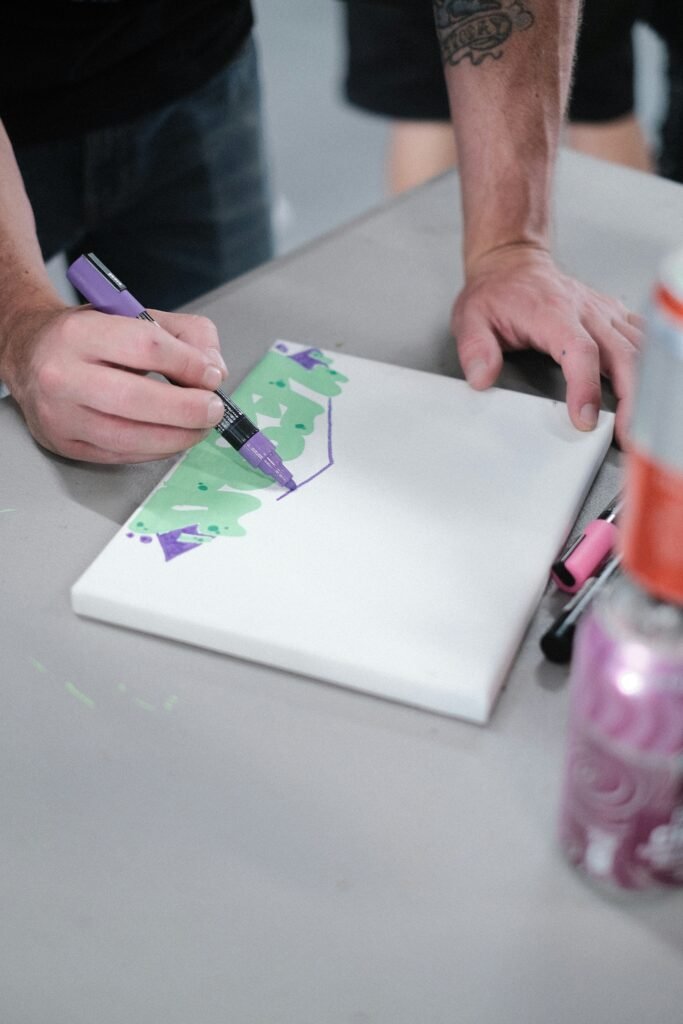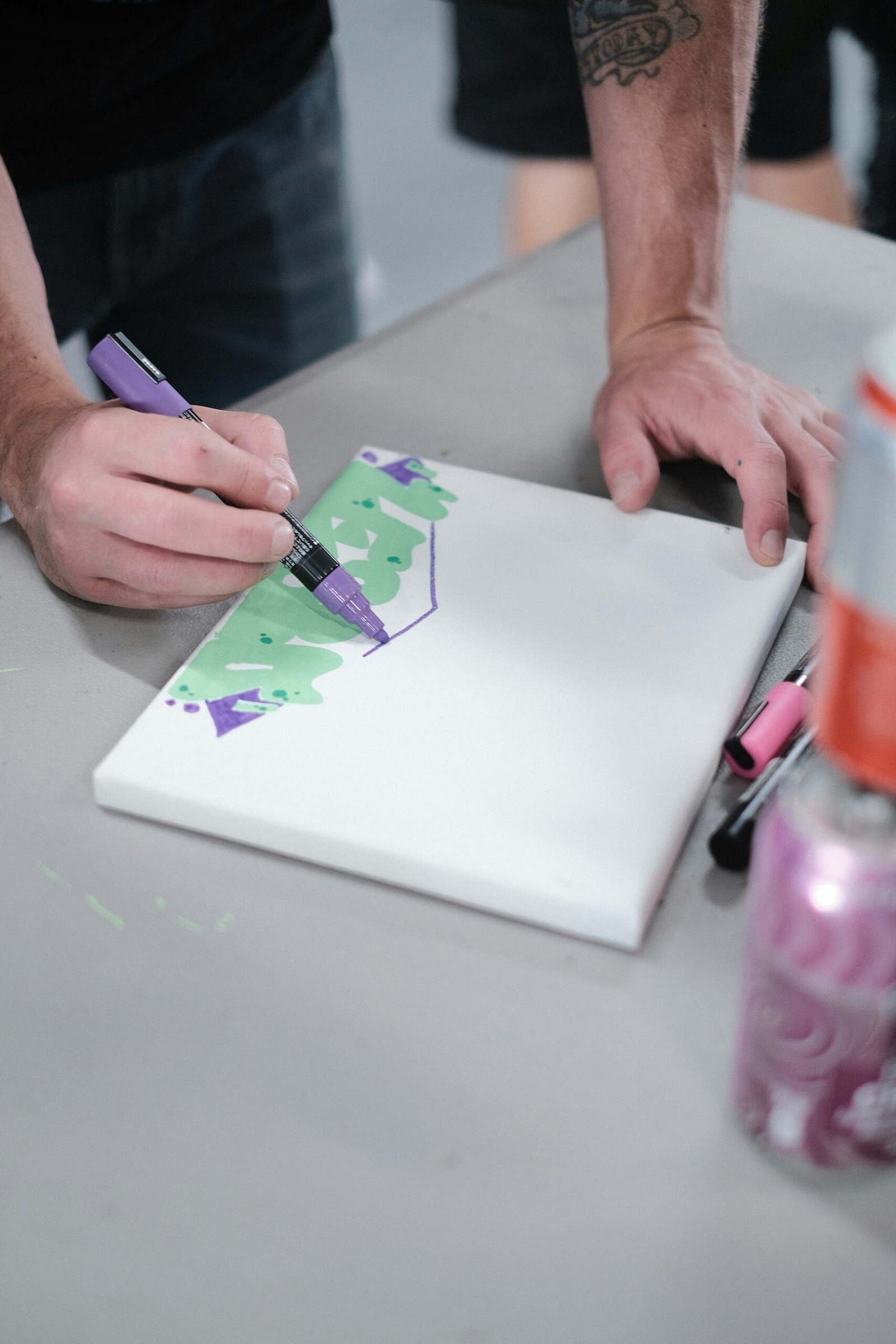So, you’ve got a plain old car that’s begging for a bit of personality. Well, look no further! In this ultimate guide to custom paint jobs and decal designs, we’re going to take you on a journey through the world of automotive customization. Whether you’re a DIY enthusiast or looking to hire a professional, we’ve got you covered with tips, tricks, and inspiration to transform your vehicle into a jaw-dropping work of art. From subtle accents to bold and vibrant designs, let your imagination run wild as we explore the endless possibilities that await you. Let’s get started!
The Ultimate Guide to Custom Paint Jobs and Decal Designs
So you’ve decided to give your vehicle or object a fresh new look with a custom paint job and decal designs. Congratulations! Not only will this allow you to express your personal style and preferences, but it will also make your vehicle or object truly stand out from the crowd. In this comprehensive guide, we will walk you through the step-by-step process of achieving the perfect custom paint job and decal design.

This image is property of images.unsplash.com.
Choosing a Design
Consider your style and preferences
Before diving into the world of custom paint jobs and decal designs, take a moment to think about your personal style and preferences. Do you lean towards bold and vibrant colors, or do you prefer a more subtle and understated look? Consider the overall aesthetic you want to achieve and let it guide your decision-making process.
Research popular designs and trends
To gather inspiration and see what is currently trending in the world of custom paint jobs and decal designs, it’s always a good idea to do some research. Browse through magazines, visit online forums, and check out social media platforms where artists and enthusiasts share their creations. This will give you a better understanding of the different styles and techniques that are popular and help you narrow down your options.
Consult with a professional for advice
If you’re feeling overwhelmed or unsure about the design choices, don’t hesitate to reach out to a professional. They have the experience and expertise to guide you in making the right decisions. A professional can help you choose a design that suits your preferences, advise you on the best techniques and materials, and even provide insights on how to achieve a truly unique look.
Preparing the Surface
Clean the surface thoroughly
Before you can start applying paint, it is crucial to prepare the surface properly. Begin by thoroughly cleaning the surface you plan to paint. Remove any dirt, grease, or other substances that may prevent the paint from adhering properly. Use a mild detergent and water solution, along with a soft cloth or sponge, to ensure a clean surface.
Repair any dents or scratches
Next, inspect the surface for any dents, scratches, or other imperfections. Repairing these before painting will result in a smoother, more professional-looking finish. Use a suitable filler or putty to fill in any dents or scratches, and sand the repaired areas until they are level with the surrounding surface.
Sand the surface for better adhesion
Once the surface is clean and repaired, it’s time to sand it. Sanding helps create a rough texture that allows the paint to adhere better. Use a fine-grit sandpaper and sand in a circular motion, focusing on any glossy or rough areas. Be sure to wipe away any dust or debris before moving on to the next step.
Selecting the Right Paint
Choose the appropriate type of paint
Selecting the right type of paint is crucial for achieving a long-lasting and high-quality finish. Consider the material of the surface you will be painting and choose a paint that is suitable for that specific material. For example, if you are painting a metal surface, look for a paint that is formulated to adhere well to metal.
Consider the color scheme
When choosing a color scheme for your custom paint job, take into account the overall look you want to achieve and how it will complement the existing colors or design elements of your vehicle or object. Consider factors such as the color of your upholstery, the exterior paint of your vehicle, or the overall aesthetic of your space.
Opt for high-quality paint products
Investing in high-quality paint products is essential for achieving a professional-looking finish that will withstand the test of time. High-quality paints not only offer better coverage and color vibrancy but also tend to be more durable and resistant to fading or chipping. Look for reputable brands that offer a wide range of colors and finishes.
Gathering the Required Tools and Materials
Paint brushes and rollers
Choosing the right brushes and rollers is vital for achieving a smooth and even application of paint. Different sizes and types of brushes and rollers are available on the market, each designed for specific purposes and types of paint. Consider the size of the area you will be painting and the type of paint you will be using when selecting your brushes and rollers.
Masking tape and drop cloths
Masking tape and drop cloths are essential for protecting areas you don’t want to paint. Use masking tape to create clean edges and prevent paint from bleeding into unwanted areas. Lay down drop cloths or plastic sheets to protect the surrounding surfaces from accidental paint splatters or spills.
Primer and clear coat
Applying a primer before painting helps ensure better adhesion and coverage. It creates a smooth surface for the paint to adhere to and improves the overall durability of the paint job. Additionally, applying a clear coat as a final layer adds an extra layer of protection and gives the paint job a glossy finish.

This image is property of images.unsplash.com.
Masking and Protecting Areas
Cover areas you don’t want to paint
Before you start painting, take the time to cover or remove any parts or areas you don’t want to paint. For example, if you are painting a vehicle, cover the windows, tires, and any other parts that should not come into contact with paint. If you are painting an object, dismantle or cover any parts that should not be painted.
Use masking tape and plastic sheets
To create sharp and clean edges, use masking tape to mark off the areas you want to paint. Apply the tape carefully, ensuring it adheres well to the surface and that there are no gaps or bubbles. Cover larger areas or objects with plastic sheets or drop cloths to protect them from accidental overspray or drips.
Apply painter’s tape for clean edges
To achieve clean and precise edges, use painter’s tape along with the masking tape. Painter’s tape is designed to be easily removed without leaving residue or damaging the paint underneath. Apply it along the edges of the masking tape, ensuring a seamless transition between the painted and unpainted areas.
Applying the Base Coat
Apply a smooth and even base coat
The base coat is the foundation of your custom paint job and sets the stage for the final result. Apply the base coat using smooth and even strokes, ensuring complete and even coverage. Work in sections, starting from the top and moving downwards. Take your time and be patient to achieve the best results.
Allow sufficient drying time between coats
After applying the base coat, allow it to dry completely before applying additional coats. The drying time will depend on the type of paint you are using, so consult the manufacturer’s instructions for specific guidance. Rushing the drying process can lead to uneven drying and may compromise the final finish.
Sand between coats for a smooth finish
To achieve a smooth finish, sand the surface lightly between coats. This helps remove any imperfections or rough areas, creating a more professional-looking result. Use a fine-grit sandpaper and sand in a circular motion. Be sure to wipe away any dust or debris before applying the next coat.

This image is property of images.unsplash.com.
Creating Custom Decal Designs
Use computer software for designing
To create custom decal designs, consider using computer software designed for graphic design. There are various programs available that offer a wide range of tools and features specifically tailored for creating decals. Use these programs to experiment with different shapes, colors, and patterns to bring your ideas to life.
Print and cut vinyl decals
Once you have designed your custom decals, it’s time to bring them into the physical world. Print your designs onto vinyl decal sheets, taking care to use high-quality ink and settings for optimal results. After printing, use a sharp cutting tool to carefully cut out the designs, ensuring clean lines and precise edges.
Apply decals using transfer tape
To apply the decals to your vehicle or object, use transfer tape. Transfer tape helps position the decals accurately and allows for easy application. Peel off the backing of the transfer tape, align the decal on the desired surface, and carefully press it onto the surface, smoothing out any air bubbles or wrinkles. Gently peel off the transfer tape, leaving the decal behind.
Adding Layers and Patterns
Experiment with color blending and shading
To add depth and dimension to your custom paint job, experiment with color blending and shading techniques. This involves layering different shades of paint to create a gradual transition of colors or incorporating shadows and highlights to create a more realistic or visually interesting design. Practice these techniques on a test surface before applying them to your final piece.
Create unique patterns and textures
Don’t be afraid to get creative and think outside the box when it comes to creating patterns and textures. Incorporate different painting techniques such as splattering, sponging, or stippling to add visual interest and uniqueness to your design. Experiment with different tools and materials to achieve the desired textures and patterns.
Use stencils for intricate designs
If you want to create intricate designs but lack the confidence to freehand them, stencils can be your best friend. Stencils allow you to achieve precise and consistent shapes and patterns with ease. Choose from a wide range of pre-made stencils available on the market or create your own by cutting out designs on thin cardboard or plastic sheets.
Applying Clear Coat and Finishing Touches
Seal the paint job with clear coat
To protect your custom paint job and give it a polished look, apply a clear coat as the final step. Clear coat acts as a barrier, preventing the paint from chipping, fading, or reacting to environmental factors. Apply the clear coat following the manufacturer’s instructions, and be sure to allow sufficient drying time before handling or exposing the surface to any external elements.
Buff and polish the surface for a glossy finish
Once the clear coat has dried, take the time to buff and polish the surface to achieve a glossy finish. Use a polishing compound or wax specifically designed for painted surfaces, applying it with a soft cloth or buffer. Work in circular motions, applying gentle pressure. Buffing and polishing not only enhances the shine but also helps smooth out any imperfections.
Apply additional details or accents
If desired, you can take your custom paint job to the next level by adding additional details or accents. Consider using pinstripes, airbrushing, or hand-painted designs to create a truly unique and personalized look. Take your time and pay attention to detail to ensure a cohesive and professional result.
Caring for Your Custom Paint Job
Regularly wash and wax the painted surface
To keep your custom paint job looking its best and to prolong its lifespan, it’s important to maintain proper care and maintenance. Regularly wash the painted surface with a gentle soap or detergent specifically formulated for painted surfaces. Avoid using harsh chemicals or abrasive materials that might damage the paint.
Avoid harsh chemicals and abrasive materials
When cleaning or maintaining your custom paint job, it’s essential to avoid harsh chemicals or abrasive materials that may cause discoloration, fading, or scratching. Instead, opt for mild and non-abrasive cleaning products, soft cloths or sponges, and gentle washing techniques. This will help preserve the vibrancy and quality of your paint job over time.
Store the vehicle or object properly to prevent damage
If you won’t be using your vehicle or object for an extended period or need to store it, take proper precautions to prevent damage to the custom paint job. Store the vehicle or object in a clean and dry environment, away from direct sunlight or extreme temperatures. Consider investing in a cover or protective layer to shield it from dust, debris, and potential scratches.
By following this comprehensive guide, you’ll be well-equipped to tackle your own custom paint job and decal designs. Remember to take your time, experiment with different techniques, and let your creativity shine through. With patience and dedication, you’ll be amazed at the incredible transformation you can achieve. Happy painting!
